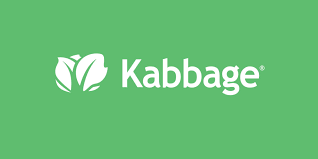In business financing, mezzanine loans have gained popularity as a flexible and versatile option for funding growth, acquisitions, and buyouts.
These unique financial instruments bridge the gap between debt and equity, offering businesses a powerful tool to access additional capital.
This comprehensive guide will explore everything you need to know about mezzanine loans, from their features and benefits to their application process and considerations.
Understanding What Mezzanine Loans Are
Mezzanine loans are a form of financing combining debt and equity elements. They are typically used to support business expansion, acquisitions, or management buyouts.
Mezzanine loans allow businesses to secure additional capital beyond traditional senior debt financing, offering a more flexible funding solution.
Key Features of Mezzanine Loans
1. Subordinated Debt
Mezzanine loans are structured as subordinated debt, meaning they have a lower priority of repayment compared to senior debt.
In the event of default or liquidation, senior debt holders are repaid first, followed by mezzanine lenders. This subordinate position comes with a higher level of risk, which is reflected in the terms and interest rates of the loan.
2. Equity-Like Features
Mezzanine loans often include equity-like features, such as equity warrants or options, which give the lender the opportunity to convert the debt into an equity ownership in the business.
This equity participation allows the lender to benefit from the business’s future growth and success.
3. Higher Interest Rates:
Due to their subordinated nature and higher risk profile, mezzanine loans typically carry higher interest rates than senior debt. The interest payments may be structured as a combination of cash interest and payment-in-kind (PIK) interest, where the interest is added to the loan principal and paid at maturity.
4. Flexible Repayment Terms
Mezzanine loans offer more flexibility in terms of repayment compared to traditional debt financing. They often have longer tenures and may include bullet payments, where the principal is repaid in a lump sum at the end of the loan term.
This flexibility provides businesses with greater cash flow management options during the life of the loan.
Benefits of Mezzanine Loans
1. Additional Capital
Mezzanine loans provide businesses with access to additional capital beyond what traditional debt financing offers. This additional funding can fuel business growth, finance acquisitions, or support other strategic initiatives.
2. Flexible Financing Solution
Unlike traditional bank loans that may have strict covenants and collateral requirements, mezzanine loans offer more flexibility. The terms of mezzanine loans can be customized to meet the business’s specific needs, providing greater freedom in structuring the financing arrangement.
3. Retained Ownership
Mezzanine loans allow business owners to retain ownership and control of their company. While the lender may have equity participation rights, the majority ownership remains with the business owners.
This can appeal to entrepreneurs who want to maintain control over their business while accessing additional capital.
Considerations and Risks
1. Higher Cost of Financing
Mezzanine loans have higher interest rates and fees than senior debt financing. Businesses need to carefully evaluate the cost of financing and assess whether the benefits of accessing additional capital outweigh the higher expenses associated with mezzanine loans.
2. Increased Risk Exposure
Mezzanine loans carry a higher level of risk due to their subordinate position in the capital structure. Businesses must clearly understand the risks involved and the potential impact on their financial position in the event of default or liquidation.
3. Complex Structuring
Mezzanine loan transactions can be complex, involving intricate legal and financial structuring. It is advisable to seek professional advice from experienced advisors to ensure compliance with relevant regulations and to navigate the complexities of mezzanine financing.
Conclusion
Mezzanine loans are a valuable financing option for businesses seeking additional capital beyond traditional debt financing.
With their subordinated debt structure, equity-like features, and flexible repayment terms, mezzanine loans offer businesses the opportunity to fund growth, acquisitions, and other strategic initiatives.
However, it’s crucial to carefully consider the costs, risks, and complexities associated with mezzanine loans before pursuing this financing option.
By thoroughly understanding mezzanine loans and seeking professional guidance, businesses can make informed decisions and leverage this powerful financial tool to propel their growth and success.


